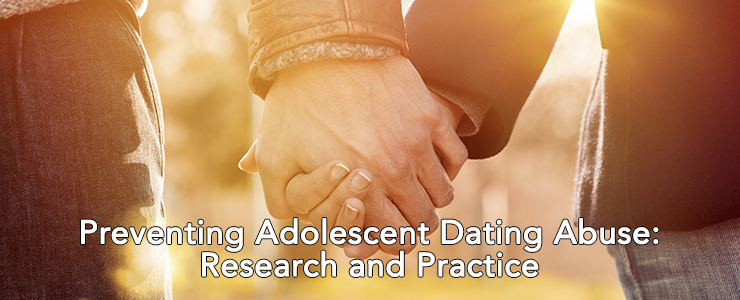
In 2013, one in 10 adolescents reported being hit or physically hurt on purpose by a boyfriend or girlfriend at least once in the previous year. [1] Controlling and demanding behaviors often happen before violence occurs. Over time, these behaviors may become increasingly violent, and that violence can have negative effects on physical and mental health throughout life, contributing to depression, eating disorders and suicidal thoughts. [2], [3], [4] Public health professionals and parents can help adolescents build healthy and respectful relationships.
This webinar will begin with an overview of the issue of adolescent dating abuse, describing how the field has grown and changed in the past 20 years, including how dating itself has changed. Dr. Rothman will share information regarding a randomized controlled trial she conducted in a hospital setting with perpetrators of adolescent dating abuse and will explain how her work supports community-based efforts to prevent adolescent dating abuse. Nicole Daley will provide an overview of the Start Strong Program and how she uses research to create program activities and tools, including the development of the Break Up Summit and Sound Relationships. Finally, she will discuss the use of the youth development model to support young people in being leaders and change agents in their work to prevent adolescent dating abuse.
[1] Centers for Disease Control and Prevention. (2014). Youth Risk Behavior Surveillance - United States, 2013. Morbidity and Mortality Weekly Report, 63(4). Retrieved January 21, 2016, from http://www.cdc.gov/mmwr/pdf/ss/ss6304.pdf?utm_source=rss&utm_medium=rss&utm_campaign=youth-risk-behavior-surveillance-united-states-2013-pdf.
[2]Banyard, V.L., & Cross, C. (2008). Consequences of teen dating violence: Understanding intervening variables in ecological context. Violence Against Women, 14(9), 998-1013.
[3] Johnson, W., Giodano, P., Longmore, M., & Manning, W. (2014). Intimate partner violence and depressive symptoms during adolescence and young adulthood. Journal of Health and Social Behavior, 55(1), 39-55.
[4] Centers for Disease Control and Prevention. (2006). Physical dating violence among high school students - United States, 2003. Morbidity and Mortality Weekly Report, 55, 532-535. Retrieved January 21, 2016, from http://www.cdc.gov/mmwr/preview/mmwrhtml/mm5519a3.htm.
http://www.hhs.gov/ash/oah/adolescent-health-topics/healthy-relationships/dating-violence.html#